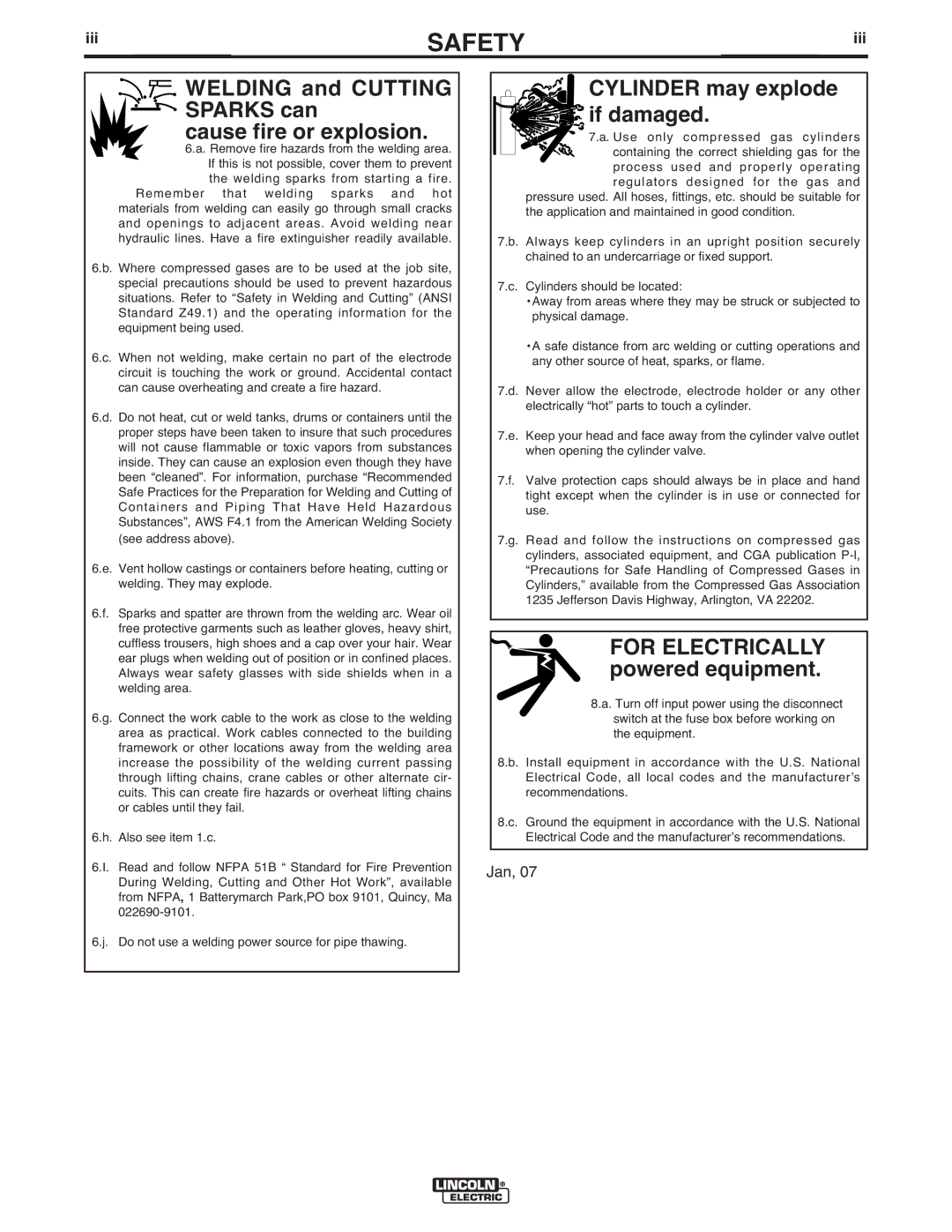IM647-A specifications
The Lincoln Electric IM647-A is a notable welding machine that epitomizes precision, performance, and innovation in the welding industry. Designed for professionals and industries requiring high-quality welding solutions, this machine combines advanced technology with user-friendly features to enhance productivity and output quality.One of the key features of the IM647-A is its multi-process capabilities. It accommodates MIG, TIG, Stick, and flux-cored welding, providing versatility for various applications and materials. This flexibility makes it an ideal choice for fabricators, maintenance facilities, and production shops needing a reliable machine for diverse welding tasks.
The IM647-A is equipped with Lincoln Electric’s advanced inverter technology which allows for a more compact design without sacrificing power. This technology provides a high-duty cycle, ensuring the machine can handle extended periods of use. The inverter system also contributes to better arc stability and control, resulting in cleaner welds and reduced spatter.
Another notable characteristic is the machine's intuitive interface. The user-friendly controls enable welders to quickly set parameters and make adjustments based on their needs. The digital display offers clear readouts of voltage and amperage, allowing welders to monitor their performance effectively. This ease of use is essential for both seasoned professionals and beginners.
Safety features are incorporated into the design of the IM647-A, including thermal overload protection and a robust housing that ensures durability while protecting internal components. These features are crucial for maintaining the integrity of the machine even in demanding work environments.
Additionally, the Lincoln Electric IM647-A is compatible with Lincoln’s extensive range of welding accessories and equipment, further enhancing its functionality. With its compact design, the machine is also lightweight, making it easy to transport between job sites without compromising on capability.
Overall, with its multi-process versatility, advanced inverter technology, user-friendly interface, and robust safety features, the Lincoln Electric IM647-A stands out as a superior choice for professionals seeking efficiency and reliability in their welding operations. It continues to set a benchmark in the welding industry, combining quality and innovation to meet the evolving needs of welders.

